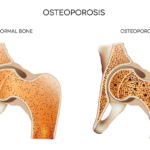In the study, the factors associated with receiving osteoporosis care in RA patients were being older or postmenopausal, having a prior fragility fracture or osteoporosis diagnosis, any duration of glucocorticoid treatment and use of biologic treatments.
Researchers conclude their paper by calling for research and clarification of patient- and provider-related factors for suboptimal management to develop effective interventions and reduce the burden of osteoporotic fractures on RA patients. “The development of an RA-specific osteoporosis prevention and management guideline may be helpful in covering all high-risk groups, optimizing osteoporosis care and decreasing the health impact of osteoporosis complications in RA,” they further conclude.
Ozen G, Kamen DL, Mikuls TR, et al. Trends and determinants of osteoporosis treatment and screening in patients with rheumatoid arthritis compared to osteoarthritis. Arthritis Care Res (Hoboken). 2018 May;70(5):713–723.

